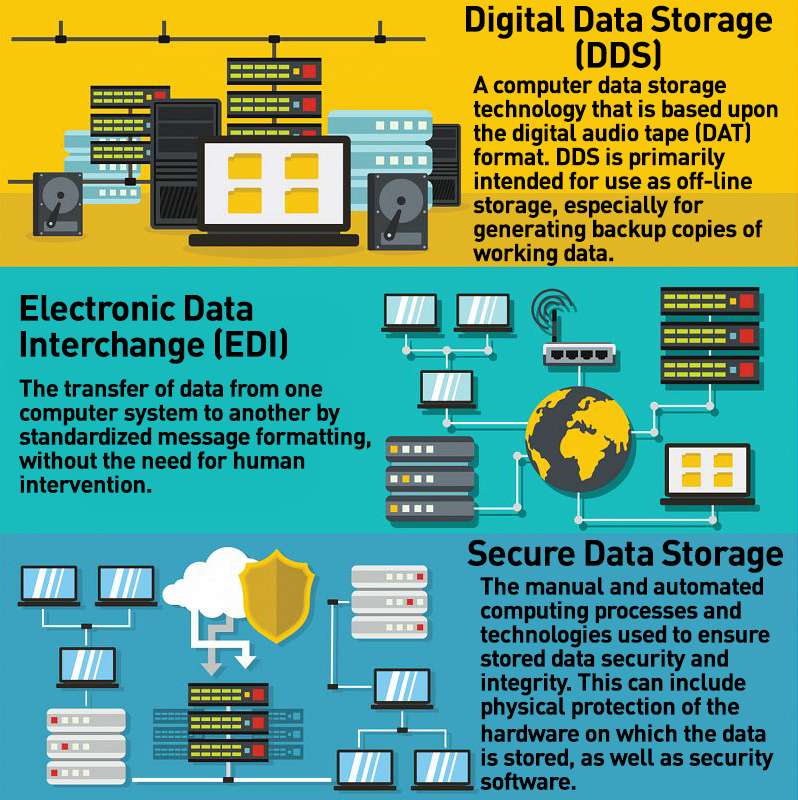Ideal Practices for Data Destruction to Strengthen Your Cyber Security Structure
Ideal Practices for Data Destruction to Strengthen Your Cyber Security Structure
Blog Article
Discovering the Importance of Information Devastation in the Context of Computer System Protection Providers and Protecting Confidential Information
In a period where data breaches are significantly common, the importance of reliable information damage can not be overstated. What strategies can organizations carry out to enhance their data devastation protocols?
Recognizing Data Devastation
Data devastation is a crucial element of computer security that involves the permanent removal of data from storage devices to avoid unauthorized access and potential information violations. In a progressively electronic landscape, companies face heightened threats connected with sensitive information being poorly accessed or made use of. Effective data destruction safeguards versus these dangers, making certain that confidential dataâEUR" such as customer information, copyright, and economic recordsâEUR" can not be recouped after disposal.
Recognizing the relevance of information devastation expands past simple compliance with legal and regulative frameworks; it is important for maintaining organizational integrity and trust fund. When information is incorrectly handled or inadequately destroyed, the consequences can be severe, consisting of economic loss, reputational damages, and legal obligations.

Techniques of Data Obliteration

One common method is information wiping, which involves overwriting existing data with random patterns numerous times. This technique renders the original information irretrievable, making it a preferred option for companies seeking to shield confidential info.
One more technique is degaussing, which utilizes a powerful electromagnetic field to disrupt the magnetic domains on storage space tools, properly getting rid of the information. This technique is specifically efficient for magnetic media however is not suitable to solid-state drives.
Physical damage is another durable approach, crushing or entailing the shredding of storage space devices. This method warranties that data recuperation is basically impossible, making it optimal for highly delicate info.
Finally, security can function as a complementary strategy to data elimination. By encrypting information prior to deletion, organizations can add an added layer of safety, guaranteeing that even if remnants are recovered, they remain hard to reach without the decryption trick. Each technique needs to be chosen based on the degree of information sensitivity and the specific safety and security requirements of the company.
Legal Compliance and Information Safety And Security
Organizations have to navigate a complicated landscape of lawful requirements connected to information protection, particularly after implementing techniques of information removal. Numerous policies, such as the General Information Protection Guideline (GDPR) and the Medical Insurance Transportability and Accountability Act (HIPAA), enforce rigorous guidelines on exactly how companies must manage and get rid of of delicate data. Failure to conform with these laws can result in considerable lawful repercussions, including considerable fines and reputational damage.
Information destruction processes have to be carefully recorded to show conformity with applicable laws and requirements. This documents not just acts as proof of adherence to legal go to this website responsibilities yet additionally illustrates a commitment to securing delicate information. Organizations needs to also develop clear plans pertaining to data retention and destruction timelines, making certain that data is not held longer than necessary.

In addition, routine audits and assessments of data damage techniques are necessary to maintain compliance and adjust to evolving lawful frameworks (data destruction). By proactively attending to lawful demands, companies can minimize risks related to information breaches and show their dedication to information safety and security. Ultimately, prioritizing lawful compliance in data damage procedures is not just a regulatory obligation, but a fundamental facet of a durable information safety approach
Effect On Company Online Reputation
The reputation of a business can be dramatically impacted by its technique to information destruction and administration. In today's electronic landscape, where data breaches can happen anytime, the failure to appropriately throw away sensitive info can lead to serious repercussions. Organizations that inadequately handle information devastation risk subjecting personal customer details, which not only violates personal privacy regulations however likewise wears down count on amongst clients and stakeholders.
A ruined reputation can lead to decreased consumer loyalty, as customers become hesitant to involve with a business that has actually shown carelessness in securing their data. Negative attention surrounding a data breach can have a long lasting impact, as prospective clients may be prevented by the regarded lack of protection. This can lead to a direct decrease in income and market share.
Additionally, companies that prioritize data destruction as component of their protection technique can improve their credibility by showcasing their dedication to guarding sensitive information. By embracing stringent data monitoring practices, companies can not just mitigate threats yet likewise position themselves as credible entities in their particular industries, therefore strengthening their total brand name photo.
Finest Practices for Secure Disposal
Carrying out best techniques for secure disposal of information is essential for minimizing risks associated with data breaches and ensuring compliance with personal privacy policies. Organizations must embrace an extensive information disposal plan that describes procedures for both electronic and physical data devastation.
For physical data storage space gadgets, such as hard drives, shredding or degaussing is recommended to prevent information recuperation. Furthermore, companies ought to preserve a chain of custodianship documents throughout the disposal procedure, guaranteeing responsibility and traceability of disposed things.
For digital information, using software application that abides by industry standards for data wiping is important. This software application needs to overwrite existing information multiple times, making recuperation practically impossible. It is also vital to verify the efficiency of the data damage process through audits or third-party analyses.
Educating staff members on protected disposal methods adds another layer of protection, as human mistake can often cause information exposure. On a regular basis evaluating and updating disposal policies ensures placement with advancing policies and technical innovations. By executing these ideal practices, companies can substantially minimize the danger of unapproved data access and article source improve their general information protection method.
Conclusion
In conclusion, data destruction is a fundamental element of computer system safety services that ensures the defense of personal information from unapproved gain access to. Implementing efficient approaches of data removal, sticking to lawful conformity, and acknowledging the effect on organization online reputation are essential components of a detailed data safety and security technique. By embracing finest practices for safe and secure disposal, companies can promote trust with clients and guard delicate data, eventually adding to an extra secure electronic landscape.
In go right here a period where data violations are progressively usual, the relevance of efficient information damage can not be overstated.Data damage is a vital element of computer security that entails the long-term elimination of data from storage space tools to prevent unauthorized access and possible data violations. Organizations needs to likewise develop clear policies relating to information retention and devastation timelines, ensuring that information is not held longer than required.
By proactively resolving lawful needs, companies can alleviate risks linked with data violations and show their dedication to data safety (data destruction). Ultimately, focusing on legal conformity in data devastation procedures is not just a governing commitment, but an essential element of a robust information safety approach
Report this page